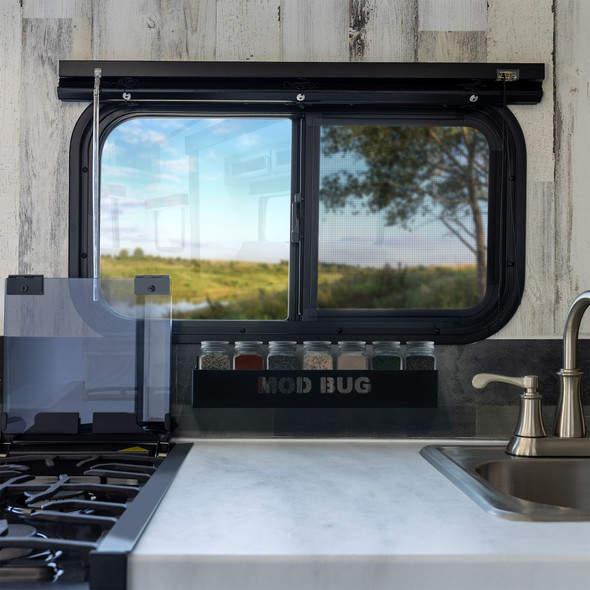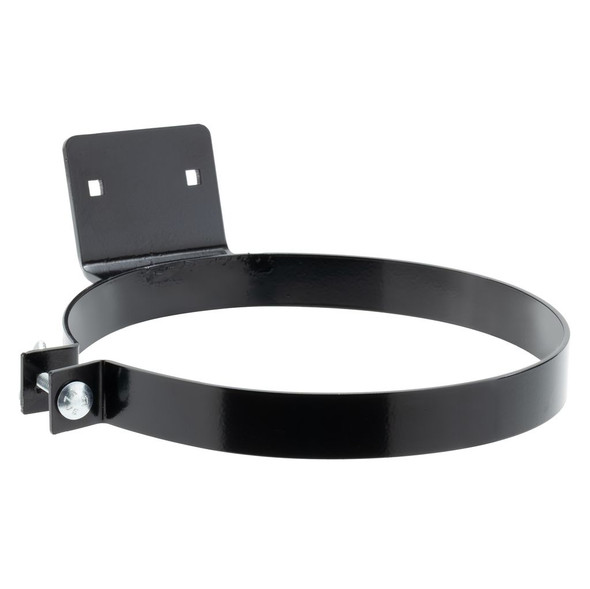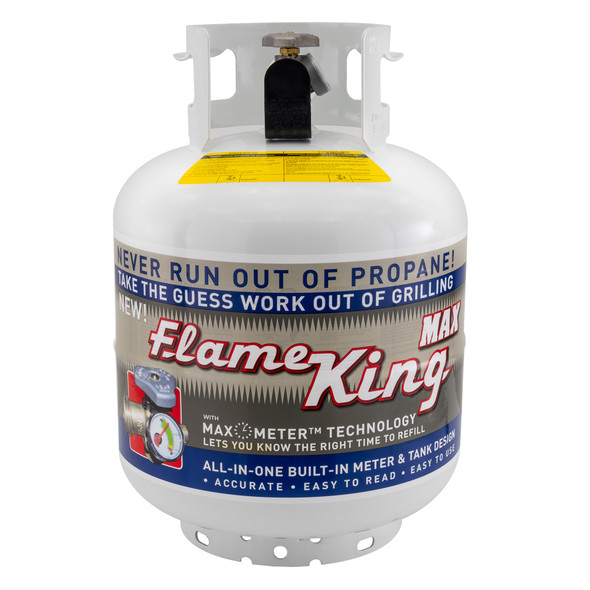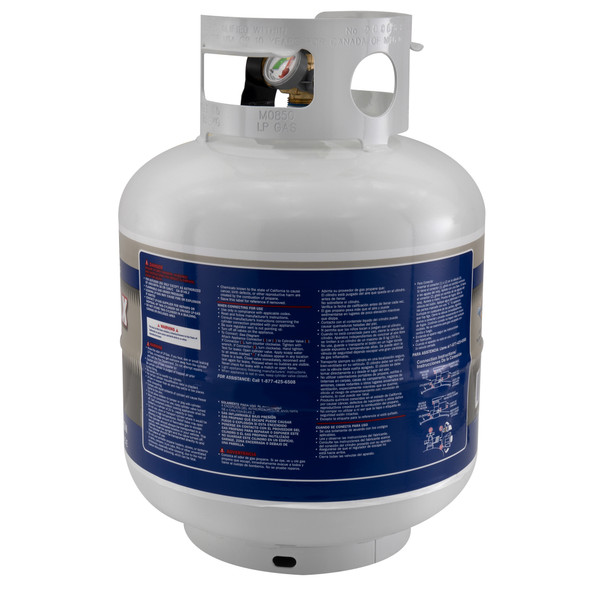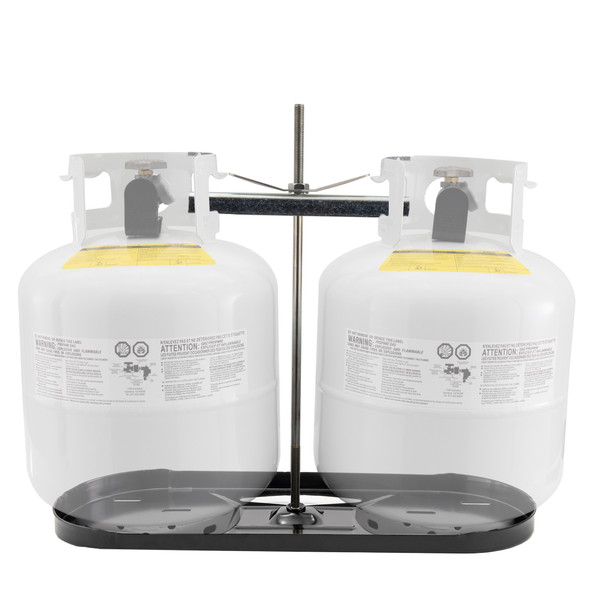In the world of RVing, propane gas is king. It’s the main source of power for generators and multiple appliances and is the most common course of power for boondocking or when your electric outlet isn’t available. LP gas is known by a few names: LPG, Propane, LP-gas being the most common. Propane cylinders come in different sizes and can have different uses, depending on that size. They are named for the amount of propane they can hold, measured in pounds.
Whether you’re new to the RVing world or have been a full-timer for years, propane is an important part of the experience. Whether you’re creating a whole new setup or are fixing up an old one, you can find your tanks and mounting hardware right here. Need more information before buying? Well, just keep reading!
Types of LP Tanks
First, there are two types of RV LP tanks; ASME LP tanks and DOT LP tanks. ASME LP tanks are the more permanent tanks that are built into the RV itself. They are called ASME tanks because they are certified by the American Society of Mechanical Engineers. They can range from 20-pounds in smaller RVs to 100-pounds in the larger class A motorhomes. Attached to the frame of the RV by brackets, they are securely in place and are not replaced but rather refilled. Because of this fact, they do not need to be recertified.
As long as your tank is in good condition and is working properly, you can refill it as needed. As a plus, they also almost always come with a gauge to tell you how much gas is left in the tank. If you have concerns about the tank, however, see an RV technician just in case. With propane, you can never be too safe.
DOT LP tanks are also called portable propane tanks. They are the same tanks that you can use to power grills and other appliances like you would at a summer barbeque. They are called DOT tanks because they are certified by the Department of Transportation. While they are smaller than the ASME tanks, they have the advantage of being smaller and easier to carry as well as being easier to refill or exchange. You can also increase the capacity by carrying multiple tanks with you. As you don’t have a set space that the tank needs to be installed, you can create your own space in which to use or store them.
Now that you have the differences between these two types of tanks, which one do you need? Well, if you have an ASME tank attached to your rig, you don’t exactly have a lot of wiggle room. Typically, the RV manufacturer will tell you which size you need and whether it’s big enough to suit your needs. If you do have a little wiggle room for choice, however, go for the largest tank your budget will allow. This will save you time, money, and stress, as you don’t need to spend as much on refills.
If you are carrying DOT tanks or would like to have a DOT tank on hand as a backup, you have a few choices. There are multiple options for DOT tanks, generally between 20-pounds, 30-pounds, and even the larger 40-pounds. This decision comes down to how much you will be using and how much you want to spend with refilling or exchanging them. The larger tanks will have a higher capacity but will be harder to find replacements for. The larger tanks will generally be refilled while the smaller tanks will need to be exchanged. The larger tanks are heavier and you can only carry around 2 at a time while the smaller tanks are lighter and you can carry up to 4 at a time.
If you’d rather keep your own tank and refill it, then you should probably go for the larger tank. On the other hand, though, many people find the smaller tanks more convenient. You can carry more for backup and swap them out as needed, you can walk into a gas station and easily exchange an empty tank for a new, full one, and you don’t have to worry about recertifying an old tank when you are exchanging them.
How Much Propane Will You Need?
If you have an already-existing setup that you just need to replace, then you probably already know what size you need. If you are looking to expand your setup or are creating a whole new one, then you might need some guidance. The best way to figure out how much propane you will need is by looking at what all you will be powering and how much energy (propane) this will use. To do this, first take into account which appliances you will be using. For example, a furnace can use between 20,000-40000 BTU, a kitchen range can use around 10,000BTU an hour when on, fridges can use around 1,500 BTU an hour, and grills can use around 8,000-10,000 BTU, depending on the size.
Whichever appliances you are using, make sure to check the manual or your recorded usage to see the actual amount for your specific models. Once you have these numbers, multiply them by how much you will be using them throughout the day (for example, the fridge will be on all the time, so multiply the amount by 24 hours, but the range will only be on for let’s say 2 hours per day, so multiply the amount by 2). Add all of your numbers together and you have your approximate BTU requirement.
Once you have your approximate BTU requirement, you can find out how much propane that is. Propane produces about 91,500 BTU of heat per gallon (or 21,500 BTU per pound), so you would compare the amount of BTU available in the tank to the amount of BTU you need daily and from there, you can choose a tank.
If you are only camping for a few days, then you can get by with using tanks that are filled with only enough propane to get you through these, but if you are planning on spending more time in your rig, then we recommend getting as much propane as possible so that you spend less time refilling or exchanging it and more time enjoying your vacation.
How to Tell if Your Gas is Empty
If your LP fuel tank has a gauge on it to tell you whether it’s empty or not, then these next few tips might not be as helpful to you. If you’re struggling to know how much is left in there, though, then keep reading.
DOT cylinders often do not come with gauges already fitted to them, which can make figuring out how much is left a little difficult. One method is to weigh it. The empty cylinder weight (or tare weight) is engraved on the cylinder’s collar, beginning with the letters ”TW”, followed by weight in pounds. Subtract the tare weight from the weight you find when weighing the tank will give you the weight of the propane. Divide this number by 4.2 (the weight of 1 gallon of propane) and you have the number of gallons left in the cylinder.
While this method can give you more accurate results, it can be difficult and time-consuming. If you are looking for an easier and faster method, then then you can always install a gauge to the tank. A tank level gauge can be inserted between the OPD valve and the high pressure line’s ACME nut, however, these level indicators can be sensitive to temperature changes and might not be as accurate.
If you do not have a scale or a level indicator gauge, then you can use the hot water method. Pour a small amount of hot water down the side of the propane cylinder and run your hand down the side where you poured the water. When you feel a cold spot, that’s where the approximate fuel level is. This is because the propane absorbs the heat from the meta, cooling it down. You can also see this change from simply looking at the water changing if you are able to spot the differences.
LP-Gas Mounting Hardware
Unlike the propane tanks you would use on your grill or lamps, RV LP tanks need to be mounted a specific way. If you’re using an ASME tank, then you are mounting it using the brackets on the tank. If you have a DOT cylinder, however, you are going to need a mounting kit. Oftentimes, your RV will come with the propane tank holder, however, if you are building your own setup or your existing setup needs replaced, then you will need a high-quality mounting setup to keep your tanks safe and secure.
Most of the time, these mounts can hold two propane cylinders. Some, however, are also capable of holding extra tanks. For the best durability, look for mounting kits that are made of powder-coated steel or aluminum. This will keep the cylinders secure while lasting for long periods of time. Included in this mounting kit are generally: a base place that is welded or bolted to the frame of your RV (this will hold the weight of the tanks), a heavy-duty rod coming up from the base to the top, and a bracket that is held on by the wing handle that will secure the tanks in place.
All of these pieces are important in keeping your tank in place while you’re on the road. For added protection, it’s a good idea to invest in an LP Tank lock. This keeps your tank safe not only from wear and tear, but from potential theft as well.


